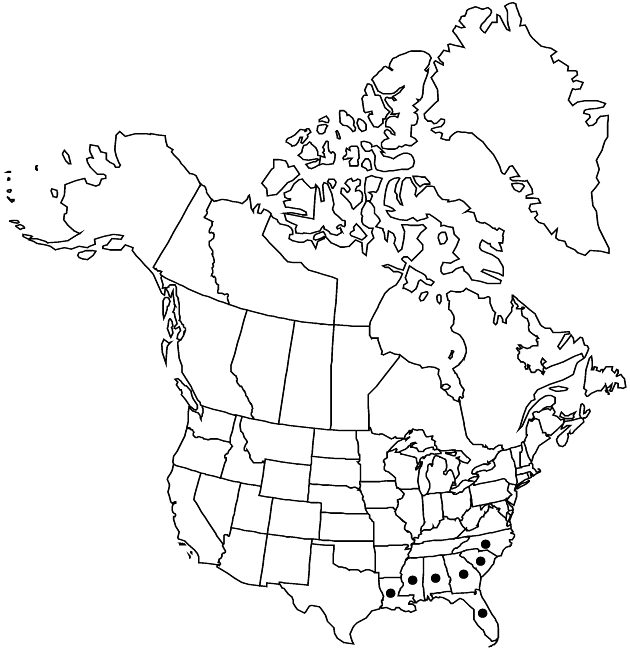Carphephorus odoratissimus
Rhodora 70: 483. 1968.
Common names: Vanillaleaf
Endemic
Basionym: Chrysocoma odoratissima J. F. Gmelin Syst. Nat. 2: 1204. 1792
Synonyms: Liatris odoratissima (J. F. Gmelin) Michaux Trilisa odoratissima (J. F. Gmelin) Cassini
Treatment appears in FNA Volume 21. Treatment on page 536.
Revision as of 20:09, 5 November 2020 by imported>Volume Importer
Plants 50–140(–180) cm. Stems glabrous. Leaves: basal oblanceolate to obovate, mostly 9–50 cm; proximal cauline well developed, gradually reduced distally, clasping, faces not gland-dotted. Heads in flat-topped, corymbiform arrays. Peduncles glabrous. Involucres 3.5–5 mm. Phyllaries 5–12 in 1–2(–3) series, oblanceolate, gland-dotted, apices obtuse. Receptacles epaleate or partially paleate (paleae 1–2). Corollas glandular, lobes 0.8–1 mm. Cypselae glandular; pappus bristles in ± 1 series.
Distribution

Ala., Fla., Ga., La., Miss., N.C., S.C.
Discussion
Varieties 2 (2 in the flora).
Selected References
None.
Lower Taxa
Key
| 1 | Plants with strong odor of coumarin or vanilla; basal leaves usually more than 15 × 5 cm; midstem leaves broadly elliptic, margins often shallowly dentate, apices flared away from stems; primary head-bearing branches diverging from main axes at 10–20°; florets mostly 7–10 | Carphephorus odoratissimus var. odoratissimus |
| 1 | Plants with slight or no odor of coumarin or vanilla; basal leaves less than 15 × 4 cm; midstem leaves narrowly elliptic, margins entire, apices appressed to stems; primary head-bearing branches diverging from main axes at 30–45°; florets mostly 10–14 | Carphephorus odoratissimus var. subtropicanus |